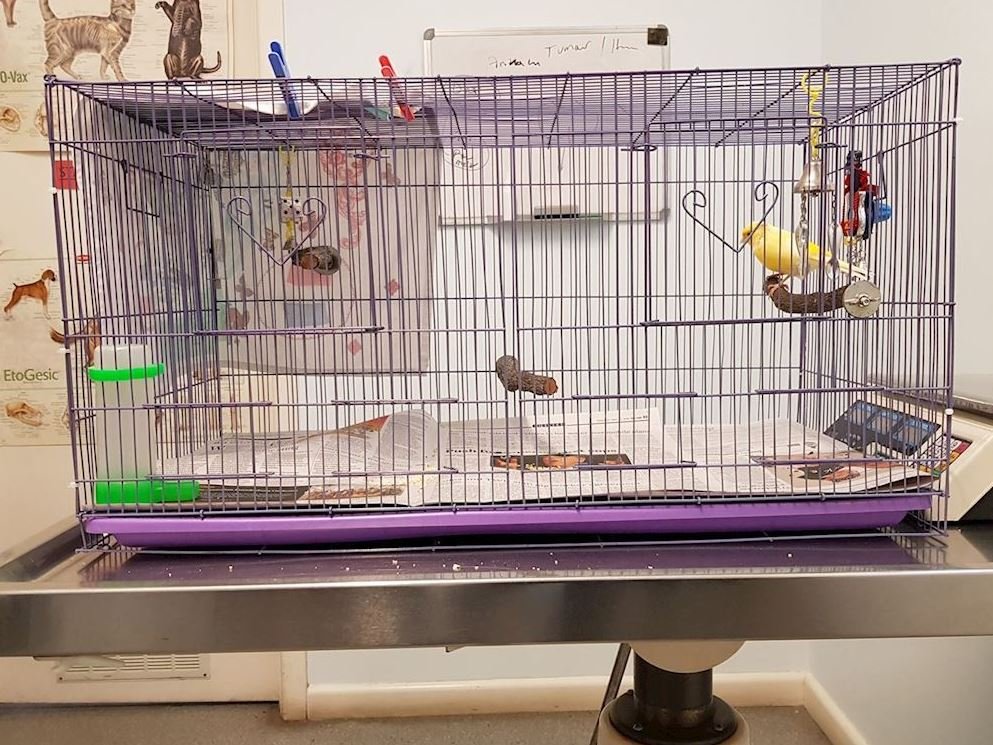Bringing a bird into your life means creating a space where it can thrive—not just survive.
One of the most overlooked but crucial aspects of bird care is providing the right cage setup and size. Many new bird owners underestimate how much space and stimulation birds actually need. A well-designed cage isn’t just a home—it’s your bird’s entire world.
In this article, we’ll walk through what makes a cage safe, appropriately sized, and enriching, so your bird can live a happy, healthy life right from day one.
Why Cage Size Matters More Than You Think
Imagine spending 20 hours a day in one room—wouldn’t you want that room to be as spacious and interesting as possible? That’s exactly how life in a cage feels for birds. While we often think of cages as “containers,” they should actually be dynamic environments.
General size guidelines:
- Budgies, lovebirds, and parrotlets: Minimum 18″x18″x24″, though bigger is always better.
- Cockatiels and conures: At least 24″x24″x30″.
- African greys, Amazons: A minimum of 36″x24″x48″.
- Macaws and large parrots: No less than 36″x48″x60″, with bar spacing and strength suited to their beaks.
These are minimums. Whenever possible, go larger—especially horizontally. Birds need room to flap their wings, climb, and move between toys and perches without feeling cramped.
Bar Spacing & Cage Material: Not Just Aesthetic Choices
Bar spacing matters for both safety and comfort:
- Small birds: ½ inch spacing or less
- Medium birds: ¾ inch to 1 inch
- Large parrots: 1 to 1.5 inches
Too wide, and your bird could get its head stuck. Too narrow, and the cage may feel claustrophobic or limit visibility.
In terms of materials, powder-coated steel or stainless steel cages are ideal. Avoid cages with flaking paint, rust, or thin metal bars—these can be dangerous. Also, steer clear of cheap decorative cages that look nice but don’t meet safety or space requirements.
Cage Placement: Where You Put the Cage Matters
Your bird’s cage should be placed in a part of the home where they can feel part of the family, but not overwhelmed. The cage should be:
- Away from drafts, direct sunlight, and cooking fumes
- Placed at or above chest height to make your bird feel safe
- Near social activity but not in the busiest, loudest rooms
- In a space where your bird gets a day-night rhythm (darkness at night is essential for sleep)
Avoid placing cages in kitchens—fumes from nonstick cookware (like Teflon) can be deadly to birds, even in small amounts.
Perches: More Than Just a Place to Sit
Your bird’s feet are always working—perching, climbing, balancing. That’s why having a variety of perches is key to foot health and comfort.
Types of perches to include:
- Natural wood branches (e.g., manzanita, java wood) for texture
- Rope perches for flexibility and grip variety
- Concrete or mineral perches for beak and nail health (use sparingly)
- Avoid smooth plastic or dowel perches as the only option—they don’t exercise the feet.
Place perches at various heights and locations to encourage movement and prevent boredom. Just don’t overcrowd—the bird should be able to move without constantly bumping into things.
Toys, Foraging, and Enrichment: Keeping Minds Active
Birds are naturally curious and intelligent. Without enough stimulation, they can develop problems like screaming, feather plucking, and aggression. Toys are essential, not optional.
Rotate toys regularly and offer different types:
- Chew toys (especially for parrots and cockatoos)
- Foraging toys that make your bird work for treats
- Puzzle toys to challenge their brains
- Swings and ladders for movement
DIY foraging ideas include hiding seeds in paper cups or creating shredded paper boxes with hidden treats. Change the layout every week or two to keep the cage fresh and interesting.
Food & Water Dishes: Position and Cleanliness Matter
Most cages have built-in food and water cups, but always check:
- They’re easily accessible
- Positioned away from perches (no one likes food with droppings)
- Cleaned daily—bacteria grow quickly in warm, moist environments
You might also consider adding a cuttlebone or mineral block to support beak health and provide trace nutrients.
Don’t Forget About Out-of-Cage Time
Even the most spacious cage can’t replace flight and freedom. Depending on the species, birds need anywhere from 1 to 4+ hours of supervised out-of-cage time per day. This is critical for their physical and mental well-being.
Make your home bird-safe: cover windows, remove toxic plants, and make ceiling fans off-limits. The more time your bird gets to stretch, fly, and interact with you, the happier they’ll be.
A Cage Should Feel Like a Home, Not a Jail
Creating the right cage environment isn’t just about ticking boxes—it’s about understanding what makes your bird feel safe, comfortable, and stimulated. When a cage is set up thoughtfully, it becomes a haven—a space your bird wants to be in, not one they’re desperate to escape.
By choosing the right size, providing a variety of perches and toys, ensuring cleanliness, and committing to daily interaction, you’re setting the stage for a long, happy life with your feathered friend.

